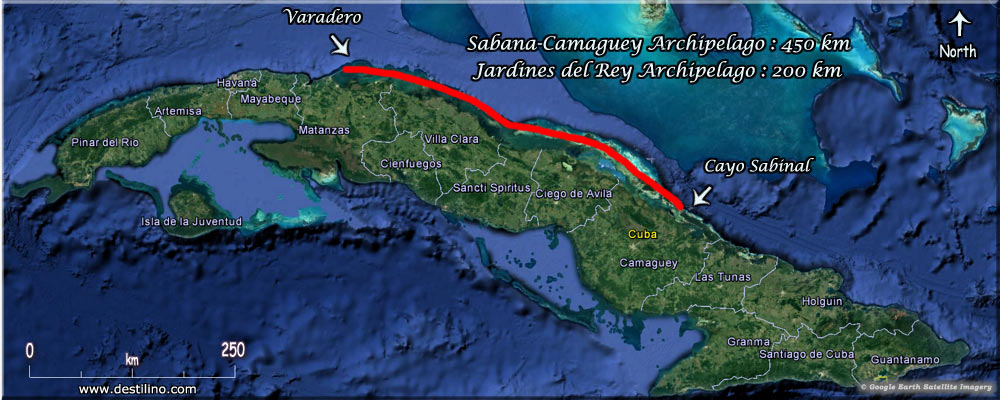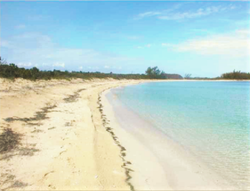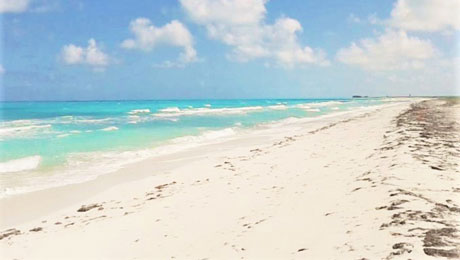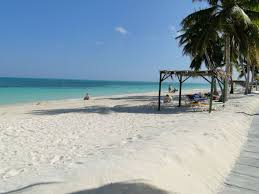 CUBA ANNOUNCES MEGAPROYECTO TURÍSTICO IN CAMAGUEY CAYS.
CUBA ANNOUNCES MEGAPROYECTO TURÍSTICO IN CAMAGUEY CAYS.
The opening in the next few months of the first hotel built in Cayo Cruz, an island of some 26 square kilometers, is the beginning of a hotel development process in the cays of the province of Camagüey, the official Granma newspaper reported.
The megaproject, which until 2030 involves the construction of 25,000 rooms in that area, will be inaugurated with an installation whose temporary name is Quebrada 17.
The hotel will have 546 rooms distributed in two areas, with six bungalows each, in addition to a main building and a wide network of restaurants, swimming pools, bars, ranchones, gyms and theater, among other essential services in tourism.
The surrounding area will have a service area with spa, convention center, Casa del Habano, several restaurants, a gallery of stores, bowling, ice cream parlor, party room and a 60-room hotel.
Two other hotels of 420 and 121 rooms, respectively, stand up in a less advanced phase. Last July, Gaviota’s Vice President of Marketing had declared that “the Ocean Arenas Blancas”, with 546 rooms, next to the Quebrada Hotel, will be the premiere of Cayo Cruz as a new destination north of Camagüey. ”
Details of Camagüey Megaproject.
The hotel development will have as stages the keys Cruz, Mégano Grande, Guajaba and Sabinal, part of the keys of the Jardines del Rey, all with high quality virgin beaches, to date not affected by the large-scale tourism exploitation and values environmental and landscape.
The report published by Granma indicates that the authorities involved in the execution of the megaproject decided to start the construction program for Cayo Cruz, joined to the mainland in the area of Jigüey beach by a pedraplén of more than 40 kilometers that crosses first to Cayo Romano before arriving at its final destination. Located in front of the Old Channel of the Bahamas, Cruz is a long and narrow islet, with a length in its north coast of 25 kilometers, good part of which correspond to sandy beaches.
Although the official report avoids mentioning it, this is a new venture of the Gaviota business group, linked to the Cuban military business complex GAESA. Gaviota expands other sun and beach destinations, such as Varadero, Cayo Paredón Grande and Cayo Cruz (center-north), as well as the Peninsula de Ramón, Antilla, Holguín.
In Cuba there are 69,041 hotel rooms today, 63% of them in four- and five-star facilities – often questioned by the quality of service – and 74% located on beaches. According to official data, 65% of the total capacity is operated by mixed companies formed by foreign companies and Cuban state-owned companies.
EDITOR’S NOTE: The problem is that as long as ownership continues to belong mostly to the State, those who are most interested in producing it, those who benefit most from it, are a few bureaucrats of the highest level who are the true owners. Neither the intermediate bureaucracy nor the downsizing, much less the workers, have an interest in making the exploited state property productive, since for them it does not imply tangible benefits.
 CUBA ANUNCIA MEGAPROYECTO TURÍSTICO EN CAYOS DE CAMAGUEY.
CUBA ANUNCIA MEGAPROYECTO TURÍSTICO EN CAYOS DE CAMAGUEY.
La apertura en meses próximos del primer hotel que se construye en Cayo Cruz, un islote de unos 26 kilómetros cuadrados, es el inicio de un proceso de desarrollo hotelero en la cayería de la provincia de Camagüey, informó el diario oficial Granma.
El megaproyecto, que hasta 2030 implica la construcción de 25.000 habitaciones en esa zona, será inaugurado con una instalación cuyo nombre temporal es Quebrada 17.
El hotel contará con 546 habitaciones distribuidas en dos zonas, con seis bungalows cada una, además de un edificio principal y una amplia red de restaurantes, piscinas, bares, ranchones, gimnasios y teatro, entre otros servicios imprescindibles en la actividad turística.
La zona aledaña tendrá un área de servicios con spa, centro de convenciones, casa del Habano, varios restaurantes, galería de tiendas, bolera, heladería, sala de fiestas y un hotel de 60 habitaciones.
Cerca se levantan, en una fase menos avanzada, otros dos hoteles de 420 y 121 habitaciones, respectivamente. En julio pasado, el vicepresidente de Mercadotecnia de Gaviota había declarado que “el Ocean Arenas Blancas’, de 546 habitaciones, junto al hotel Quebrada, será el estreno de Cayo Cruz como nuevo destino al norte de Camagüey”.
Detalles del Megaproyecto Camagüeyano.
El desarrollo hotelero tendrá como escenarios los cayos Cruz, Mégano Grande, Guajaba y Sabinal, parte de la cayería de los Jardines del Rey, todos con playas vírgenes de alta calidad, hasta la fecha no afectadas por la explotación turística a gran escala y con valores ambientales y paisajísticos.
El reportaje publicado por Granma señala que las autoridades implicadas en la ejecución del megaproyecto decidieron iniciar el programa constructivo por Cayo Cruz, unido con tierra firme en la zona de la playa de Jigüey por un pedraplén de más de 40 kilómetros de extensión que atraviesa primero a Cayo Romano antes de arribar a su destino final. Ubicado frente al Canal Viejo de Bahamas, Cruz es un largo y estrecho islote, con una longitud en su costa norte de 25 kilómetros, buena parte de los cuales corresponden a playas arenosas.
Aunque el informe oficial evita mencionarlo, se trata este de un nuevo emprendimiento del grupo empresarial Gaviota, vinculado al complejo empresarial militar cubano GAESA. Gaviota expande otros destinos de sol y playa, como Varadero, Cayo Paredón Grande y Cayo Cruz (centro-norte), así como la Península de Ramón, de Antilla, Holguín.
En Cuba existen hoy 69.041 habitaciones de hotel, de ellas el 63% en instalaciones de cuatro y cinco estrellas —con frecuencia cuestionadas por la calidad del servicio— y el 74% ubicadas en playas. Según datos oficiales, el 65% del total de las capacidades está operado por sociedades mixtas conformadas por compañías extranjeras y empresas estatales cubanas.
NOTA DEL EDITOR: El problema es que mientras la propiedad siga perteneciendo mayoritariamente al Estado, los más interesados en hacerla producir, los que más se benefician de ella, son unos pocos burócratas del más alto nivel que son los verdaderos dueños. Ni la burocracia intermedia ni la baja, y mucho menos los trabajadores, tienen interés en que sea productiva la propiedad estatal explotada en forma asalariada, puesto que para ellos no implica beneficios tangibles.
Agencies/DDC/ Internet Photos/ Arnoldo Varona, Editor/ TheCubanHistory.com
THE CUBAN HISTORY, HOLLYWOOD.








